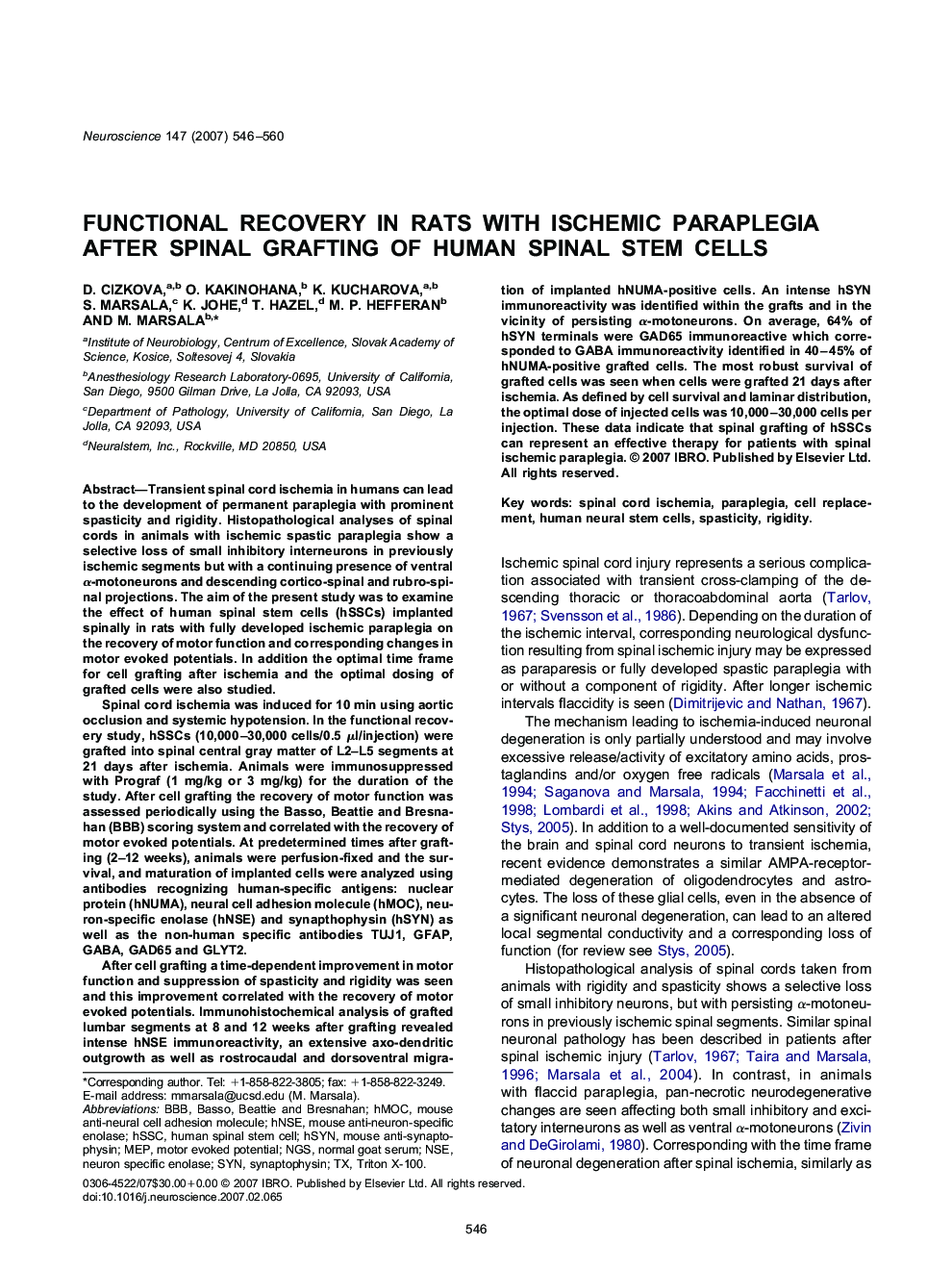| Article ID | Journal | Published Year | Pages | File Type |
|---|---|---|---|---|
| 4341661 | Neuroscience | 2007 | 15 Pages |
Abstract
After cell grafting a time-dependent improvement in motor function and suppression of spasticity and rigidity was seen and this improvement correlated with the recovery of motor evoked potentials. Immunohistochemical analysis of grafted lumbar segments at 8 and 12 weeks after grafting revealed intense hNSE immunoreactivity, an extensive axo-dendritic outgrowth as well as rostrocaudal and dorsoventral migration of implanted hNUMA-positive cells. An intense hSYN immunoreactivity was identified within the grafts and in the vicinity of persisting α-motoneurons. On average, 64% of hSYN terminals were GAD65 immunoreactive which corresponded to GABA immunoreactivity identified in 40-45% of hNUMA-positive grafted cells. The most robust survival of grafted cells was seen when cells were grafted 21 days after ischemia. As defined by cell survival and laminar distribution, the optimal dose of injected cells was 10,000-30,000 cells per injection. These data indicate that spinal grafting of hSSCs can represent an effective therapy for patients with spinal ischemic paraplegia.
Keywords
Related Topics
Life Sciences
Neuroscience
Neuroscience (General)
Authors
D. Cizkova, O. Kakinohana, K. Kucharova, S. Marsala, K. Johe, T. Hazel, M.P. Hefferan, M. Marsala,
